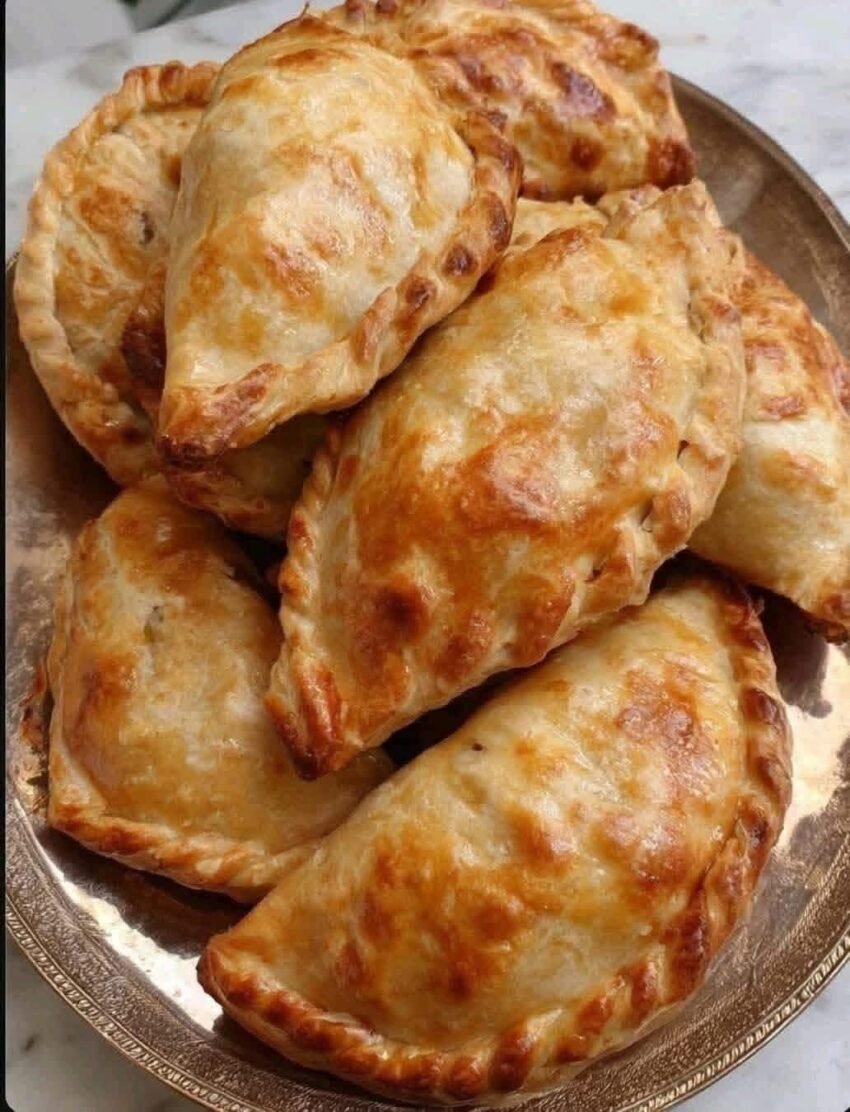A Forfar Bridie is a classic Scottish pastry hailing from the town of Forfar in Angus. It’s a beloved handheld meat pie, distinct from its cousin, the Cornish Pasty.
Here’s a detailed look at its history, traditional recipe, and key characteristics.
What is a Forfar Bridie?
A Forfar Bridie is a semicircular, savory pastry filled with minced steak (traditionally uncooked when assembled), onions, and suet, seasoned simply with salt and pepper. The pastry is a flaky, crispy shortcrust, and the filling is juicy but not overly wet with gravy.
Key Differences from a Cornish Pasty:
-
Pastry: Bridies use a shortcrust pastry, while Cornish pasties use a denser, crimped pastry.
-
Filling: The filling for a bridie is minced (ground) steak, whereas a pasty uses diced steak.
-
Vegetables: A bridie traditionally contains only steak, onion, and suet. A pasty includes diced swede (rutabaga) and potato.
-
Shape: A bridie is a distinct semicircle, often with a thick rope-like crimp along the curved edge.
History & Legend
The bridie is said to have been invented in Forfar in the 19th century, possibly by a baker named Maggie Bridie (hence the name). They were a popular, portable meal for farm workers and travelers. The sturdy pastry case protected the filling, making it an ideal packed lunch.
Traditional Forfar Bridie Recipe
This recipe stays true to the classic, no-frills method.
Yields: 4-5 large bridies
Prep time: 30 minutes (plus chilling)
Cook time: 40-50 minutes
Ingredients
For the Shortcrust Pastry:
-
450g (3 cups) all-purpose flour, plus extra for dusting
-
1 tsp salt
-
225g (1 cup / 2 sticks) cold unsalted butter or 110g butter + 110g lard (for ultimate flakiness)
-
6-8 tbsp ice-cold water
For the Filling:
-
450g (1 lb) lean minced/ground beef (not too fine)
-
1 large onion, very finely chopped
-
60g (1/2 cup) beef suet (this is traditional and adds juiciness)
-
Salt and freshly ground black pepper, to taste
-
A splash of beef stock or water (about 2-3 tbsp) – optional, for extra juice
Instructions
1. Make the Pastry:
-
In a large bowl, rub the cold fat into the flour and salt until it resembles fine breadcrumbs.
-
Gradually add the ice-cold water, a tablespoon at a time, mixing with a knife until the dough just comes together. Be careful not to overwork it.
-
Gently knead into a ball, wrap in cling film, and refrigerate for at least 30 minutes.
2. Prepare the Filling:
-
In a bowl, combine the minced beef, finely chopped onion, suet, and a generous amount of salt and pepper. Mix lightly with a fork. Do not overmix.
3. Assemble the Bridies:
-
Preheat your oven to 200°C (400°F / Gas Mark 6). Line a baking sheet with parchment paper.
-
On a floured surface, roll the pastry out to about 3-4mm (1/8 inch) thickness. Using a small plate as a guide (about 18-20cm / 7-8 inches), cut out circles.
-
Place a generous amount of the filling (about a handful) on one half of each pastry circle, leaving a 2cm (3/4 inch) border. The filling is placed raw.
-
(Optional) Add a tiny splash of stock or water on top of the filling for extra moisture.
-
Brush the edges of the pastry with a little beaten egg or milk. Fold the other half of the pastry over the filling to create a semicircle.
-
Crimp the edges: Press the edges together firmly, then fold and twist them over to create a thick, rope-like seal. This is the traditional look and prevents the juices from escaping.
4. Bake:
-
Place the bridies on the prepared baking sheet. Make a small slit or two in the top of each bridie to let steam escape.
-
Brush the tops with beaten egg or milk for a golden finish.
-
Bake for 40-50 minutes, or until the pastry is golden brown and you can hear the filling sizzling.
5. Serve:
-
Let them cool for at least 10-15 minutes before eating—the filling will be extremely hot!
-
Traditionally, they are eaten warm or at room temperature, often with a dash of brown sauce or ketchup.
Tips for Authenticity
-
Keep it Simple: The beauty of a Forfar Bridie is its simplicity. Don’t be tempted to add other vegetables or Worcestershire sauce if you want the true experience.
-
Suet is Key: Suet is what gives the authentic texture and flavor. If you can’t find it, omit it rather than substituting.
-
Handheld Perfection: A well-made bridie should be sturdy enough to eat with your hands without the filling falling out.
Enjoy a taste of Scottish baking history
